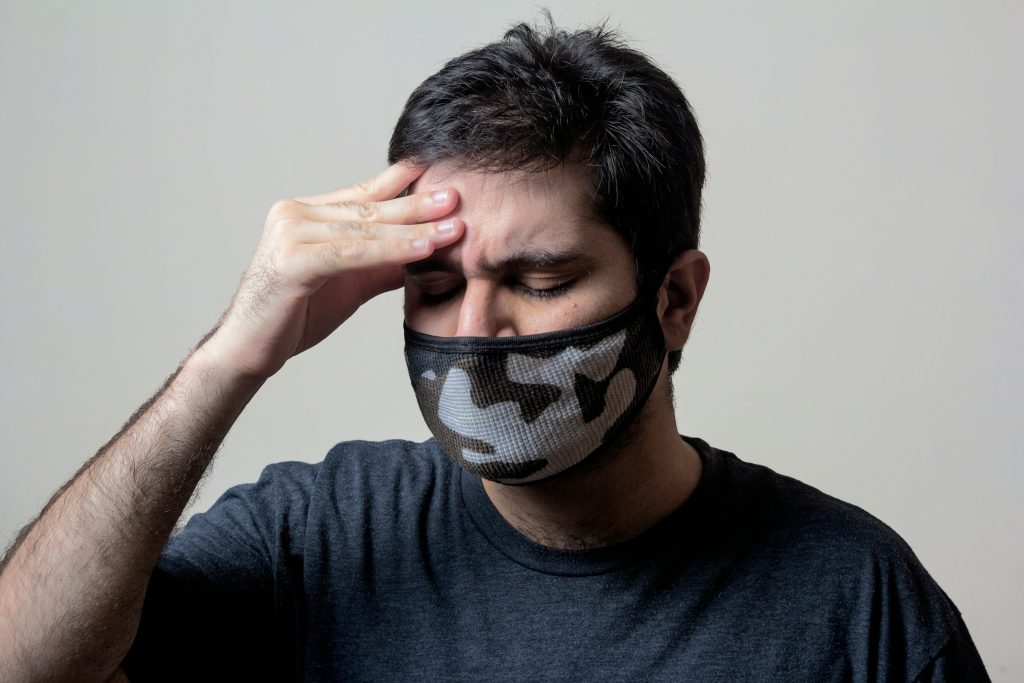For many Australians living with chronic pain, the prospect of travel—be it for leisure, work, or necessity—can be daunting. When you add motion sickness to the mix, it can feel like an insurmountable challenge. However, with proper preparation and strategies, managing both conditions and enjoying more comfortable journeys is possible.
This comprehensive guide will explore the intersection of motion sickness and chronic pain, offering practical advice before, during, and after your travels.

Understanding Motion Sickness and Chronic Pain
Motion sickness occurs when there’s a mismatch between the movement your body senses and what your eyes perceive. This discrepancy can lead to uncomfortable symptoms, including nausea, dizziness, and cold sweats. For individuals with chronic pain, these symptoms can be particularly distressing, as they may exacerbate existing discomfort or trigger pain flare-ups.
Research suggests chronic pain can heighten sensitivity to motion, potentially making individuals more susceptible to motion sickness. This increased vulnerability is thought to be related to changes in the nervous system that occur with chronic pain conditions. Understanding this connection is crucial for developing effective management strategies.
Common triggers for motion sickness include:
- Reading or looking at screens while in motion
- Sitting backwards or sideways to the direction of travel
- Exposure to strong odours or stuffy environments
- Anxiety or stress about travel
For chronic pain sufferers, additional triggers might include:
- Prolonged sitting in uncomfortable positions
- Vibrations from vehicles
- Temperature fluctuations during travel
Preparation Strategies
Consulting Healthcare Professionals
Before embarking on any journey, it’s essential to consult with your healthcare team. It can provide personalised advice based on your specific conditions and current treatment plan. It may include:
- Adjusting medication schedules to account for time zone changes
- Recommending travel-friendly pain management techniques
- Discussing potential interactions between motion sickness remedies and existing medications
Medication Considerations
Regarding motion sickness medications, it’s crucial to choose TGA-approved options. Some over-the-counter antihistamines, such as dimenhydrinate or meclizine, are commonly used for motion sickness. However, these may cause drowsiness and could interact with pain medications, so professional guidance is essential.
For chronic pain management during travel, your doctor might suggest:
- Long-acting pain relievers to provide sustained relief
- Topical analgesics for localised pain
- Portable TENS (Transcutaneous Electrical Nerve Stimulation) units for drug-free pain relief
Natural Remedies and Supplements
For those seeking natural alternatives, several options may help alleviate motion sickness:
- Ginger: Known for its anti-nausea properties, ginger can be consumed as tea, capsules, or lozenges.
- Peppermint: Often helpful for settling the stomach and reducing nausea.
- Lavender: Its calming scent may help with anxiety-related symptoms.
- Acupressure wristbands: These target the P6 (Nei Kuan) point, which is believed to help with nausea.
It’s important to note that while these natural remedies are generally considered safe, they should still be discussed with a healthcare professional, especially if you’re taking other medications.
During Travel: Coping Techniques
Positioning and Posture
Proper positioning can significantly impact both motion sickness and chronic pain:
- Choose a seat where you’ll experience the least motion (e.g., over the wing in an aeroplane, front seat in a car).
- Maintain good posture to reduce strain on your body.
- Use supportive pillows or cushions to maintain comfort during long journeys.
- Consider using a neck pillow to prevent head bobbing, which can exacerbate motion sickness.
Distraction Methods
Keeping your mind occupied can help manage both motion sickness and pain:
- Listen to audiobooks or podcasts instead of reading.
- Practice mindfulness meditation to stay present and reduce anxiety.
- Engage in conversation with travel companions.
- Focus on slow, deep breathing to calm your nervous system.
Breathing Exercises and Relaxation Techniques
Simple breathing exercises can be incredibly effective:
- Box Breathing: Inhale for 4 counts, hold for 4, exhale for 4, hold for 4. Repeat.
- Progressive Muscle Relaxation: Systematically tense and relax muscle groups from toes to head.
- Visualisation: Imagine a calm, peaceful scene to distract from discomfort.
These techniques not only help with motion sickness but can also aid in pain management by reducing tension and promoting relaxation.
Environmental Adjustments
Choosing the Right Mode of Transportation
When possible, select transportation methods that minimise motion:
- Trains often provide smoother rides than buses or cars.
- Larger ships tend to be more stable than smaller boats.
- Non-stop flights reduce the stress of multiple takeoffs and landings.
Optimal Seating Arrangements
Strategic seating can make a significant difference:
- In cars, the front passenger seat often offers the best view and least motion.
- On boats, mid-ship lower deck areas are typically the most stable.
- In trains, face forward and choose a seat in the middle of the carriage.
Temperature and Air Quality Considerations
Maintaining a comfortable environment is crucial:
- Ensure good ventilation to reduce stuffiness and potential nausea.
- Keep the temperature cool, as overheating can worsen both motion sickness and pain.
- Use a personal fan for air circulation and to help manage hot flushes associated with some pain conditions.
Nutrition and Hydration
Pre-travel Dietary Recommendations
What you eat before and during travel can significantly impact your comfort:
- Opt for light, easily digestible meals before traveling.
- Choose complex carbohydrates and lean proteins for sustained energy.
- Consider probiotics to support digestive health.
Foods and Drinks to Avoid
Certain foods and beverages may exacerbate motion sickness or interact with pain medications:
- Avoid greasy, spicy, or heavily seasoned foods.
- Limit caffeine and alcohol consumption.
- Be cautious with dairy products if you’re prone to digestive issues.
Staying Hydrated During Travel
Proper hydration is essential for managing both motion sickness and chronic pain:
- Drink water regularly throughout your journey.
- Avoid excessive fluid intake immediately before or during travel to prevent frequent restroom visits.
- Consider electrolyte-enhanced beverages for longer trips.
Post-Travel Recovery
Gradual Transition and Rest
After reaching your destination:
- Allow time for your body to adjust to being stationary.
- Rest in a quiet, comfortable environment if possible.
- Avoid rushing into activities immediately upon arrival.
Gentle Exercises and Stretches
Mindful movement can help alleviate stiffness and reduce pain:
- Perform gentle stretches to improve circulation and reduce muscle tension.
- Practice simple yoga poses or tai chi movements if appropriate for your condition.
- Take short walks to re-establish your sense of balance and orientation.
Managing Pain Flare-ups
Be prepared for potential increases in pain following travel:
- Have your regular pain management tools readily available.
- Apply heat or cold therapy as needed.
- Consider scheduling a massage or physiotherapy session for the day after arrival.
Long-term Strategies for Frequent Travelers
Building Travel Resilience
For those who travel often, developing resilience is key:
- Gradually increase the duration and frequency of trips to build tolerance.
- Keep a travel journal to identify patterns and effective strategies.
- Practice relaxation techniques regularly, not just during travel.
Alternative Therapies and Treatments
Explore complementary approaches that may benefit both motion sickness and chronic pain:
- Acupuncture has shown promise for both conditions.
- Biofeedback training can help manage physiological responses to motion and pain.
- Cognitive Behavioural Therapy (CBT) can provide coping strategies for anxiety related to travel.
Lifestyle Adjustments for Better Travel Experiences
Incorporate habits that support overall well-being and travel readiness:
- Maintain regular sleep patterns and prioritise good sleep hygiene.
- Engage in regular, appropriate exercise to improve overall stamina and flexibility.
- Practice stress management techniques in daily life to better cope with travel-related stressors.
Conclusion
Travelling with chronic pain and motion sickness presents unique challenges, but it doesn’t have to mean the end of your adventures. Understanding the connection between these conditions and implementing targeted strategies can significantly improve your travel experiences. Remember, everyone’s needs are different, so it may take some trial and error to find the perfect combination of techniques for you.
As you prepare for your next journey, consider these key takeaways:
- Consult with healthcare professionals for personalised advice.
- Prepare thoroughly, including medications, natural remedies, and comfort items.
- Use positioning, distraction, and relaxation techniques during travel.
- Pay attention to your environment and make adjustments when possible.
- Focus on proper nutrition and hydration.
- Allow time for recovery and have a plan for managing post-travel discomfort.
With patience, preparation, and the right strategies, you can expand your horizons and enjoy more comfortable travels, even in chronic pain and motion sickness. Remember, your well-being is the priority, and every small step towards more manageable travel is a victory worth celebrating.
Frequently Asked Questions:
Can chronic pain make motion sickness worse?
Yes, chronic pain can potentially exacerbate motion sickness. The heightened sensitivity often associated with chronic pain conditions may make individuals more susceptible to the sensory conflicts that cause motion sickness. Additionally, the stress and anxiety related to managing pain during travel can increase vulnerability to motion sickness symptoms.
Are there any TGA-approved natural remedies for motion sickness?
While the TGA does not formally approve many natural remedies for motion sickness, some are generally recognised as safe. Ginger, for instance, is widely accepted for its anti-nausea properties. However, it’s important to consult with a healthcare professional before using any remedy, as they may interact with existing medications or conditions.


